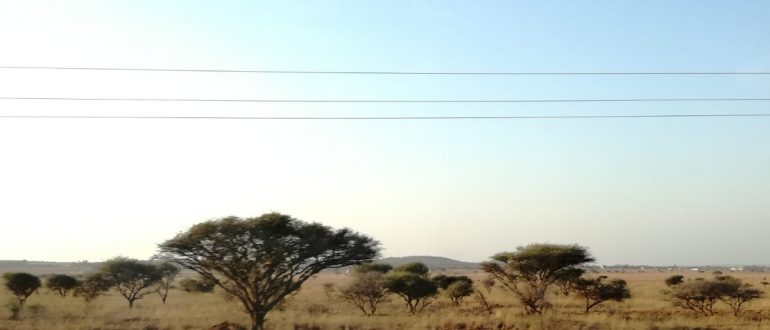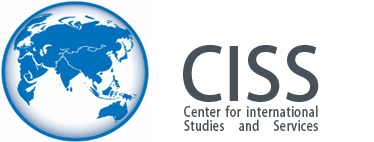
The Sub-Saharan Africa Region
The Sub-Saharan Africa region describes the part of the African continent situated geographically south of the Sahara and therefore comprises – according to the definition of the United Nations – 49 of the 54 African states. Sub-Saharan Africa forms its own climatic zone, which is ecologically, culturally, and ethnically separated from northern Africa by the Sahara and the Sahel. A special feature of the region is the enormous linguistic diversity with respectively up to several hundred languages in some states, which often makes trade and communication more difficult. For this reason, supra-regional languages – such as Kiswahili in East Africa – were developed early on and are still spoken today.
Over one billion people live in these 49 states. Sub-Saharan Africa has the highest population growth in the world, which is even expected to double to around two billion by 2050. This development offers great potential, especially due to the strong growth of the young working population. But as the number of unemployed will increase to about one million as well, there might evolve an enormous problem. Concurrently, half of the people south of the Sahara are considered underemployed and work in the informal sector. As a result, there is often a lack of sufficiently qualified specialists on the ground. Sub-Saharan African countries must succeed in actually exploiting the economic benefits of the changed age structure. If this is not successful, population development will have a threatening downside. Ultimately, humanitarian and political disasters may lead to social unrest and growing migratory flows if the region fails to feed the growing population and provide them with medical care. Is population growth an enormous opportunity, however at the same time posing too many challenges for the region?
Above all, the considerable inequality between and within individual states repeatedly leads to conflicts. In particular, corruption at all political, economic and judicial levels exacerbates social inequalities, hampers investment and undermines confidence in governments. Sub-Saharan Africa is the only region of the world where poverty has increased since 1990 (with the exception of South Africa). More than two thirds of the people have less than USD 2 per day at their disposal and are thus – according to a World Bank definition – extremely poor. Although economic output grew significantly faster than the global economy during this period, averaging more than 5 percent in real terms between 2000 and 2015, the overall situation has never improved as much as it seemed. The development and the long period of growth were significantly influenced by rising commodity prices and increased direct investment from China – a country that over time has risen to become Sub-Saharan Africa’s most important trading partner. In the meantime, growth has declined sharply again, partly as a result of China’s stronger focus on domestic consumption. GDP per capita is made up of GDP growth on the one hand and population development on the other. Because the population of Sub-Saharan Africa is growing so rapidly, the successes in poverty reduction are relatively small. Population growth averaging 2.8 percent per year reduced economic growth to around 2.5 percent per year. As a result, prosperity – measured in GDP per capita – only increases if the economy grows faster than the population. The decline in labor poverty is too slow to keep pace with the steadily rising labor force. In order to make tangible progress in the fight against poverty, Sub-Saharan Africa needs annual growth of 6 to 7 percent.
When assessing these figures, however, it should be noted that more than a third of the farmers south of the Sahara produce their food and most of their livelihood goods entirely for themselves or their local communities. These subsistence services can hardly be recorded in the prosperity indicators commonly used today. Due to social change, however, pure subsistence production is in most cases no longer sufficient to secure people’s livelihoods. The widespread poverty and the increasingly deteriorating conditions for subsistence farming – such as the displacement of large enterprises, the overexploitation of resources, and the emergence of new dependencies – have a particularly negative impact on the food and health situation. More than a fifth of the people in the Sub-Saharan region are considered malnourished; the average life expectancy is only 54 years; almost 40 percent of the population still live without adequate water supplies; and almost 70 percent without adequate sanitation. Added to this are the serious effects of the immunodeficiency disease AIDS and other infectious diseases such as malaria and tuberculosis caused by the hot and humid climate. Poor hygiene, a poor health system as well as the deficient education of the population exacerbate these problems.
For decades, the political landscape of Sub-Saharan Africa was characterized by dictatorial forms of government. Despite the democratization that has been evident since the end of the Cold War, the majority of states are governed more or less dictatorially. One fundamental dilemma is that elections in Sub-Saharan Africa are on the one hand without alternatives, but on the other hand they still frequently take place in a fragile political environment. Even in countries whose systems are considered to be relatively stable, it is not self-evident that votes take place peacefully and fairly, and that the results are generally accepted. So, are elections in Sub-Saharan Africa a curse or a blessing? The view that elections in Sub-Saharan Africa are merely a cover for authoritarian rule, and inevitably a source of instability and violence, often dominates. Particularly when elections are characterized by persistently low quality or permanently strong violence, there is a danger that they will be discredited by the population. The lack of integrity leads to an enormous loss of trust among the population and further social polarization when democratic institutions become an empty shell – increasing the potential for the outbreak of conflicts, such as in Cameroon and Zimbabwe. However, elections do not necessarily lead to violence, nor are deficient elections necessarily a façade. First of all, elections are largely without alternatives. As an indispensable element of democratic systems, elections alone do not constitute democracy, but they promote democratic values and peaceful conflict resolution. Whether elections actually have democratic substance depends on their quality – above all on the freedom of choice of the citizens and the legitimacy of state rule. Overall, the democratic quality in Sub-Saharan Africa has improved since the 1980s, although the changes are not (yet) sustainable.
Nowadays, almost all states hold multi-party elections. Nevertheless, in many cases the picture continues to be dominated by hybrid regimes that move in a grey area between democratic and autocratic rule. But how meaningful are elections really under these conditions? In general, they are relevant in all these cases. Above all, however, they are to be understood as a process and not merely as an event. Despite all justified criticism, there are clear indications of positive developments: Not only do elections in Sub-Saharan Africa take place more frequently and regularly than in the past, they are also much more fiercely contested. In addition, the continuity of elections is important, since their democratic quality can improve with each new ballot. Accordingly, the repeated holding of elections, even if they sometimes have deficits, has a democratizing effect in principle. Although this is not yet equivalent to consolidation, it contradicts the common assumption that elections with flaws inevitably undermine democratic quality – the opposite effect is at least possible.
